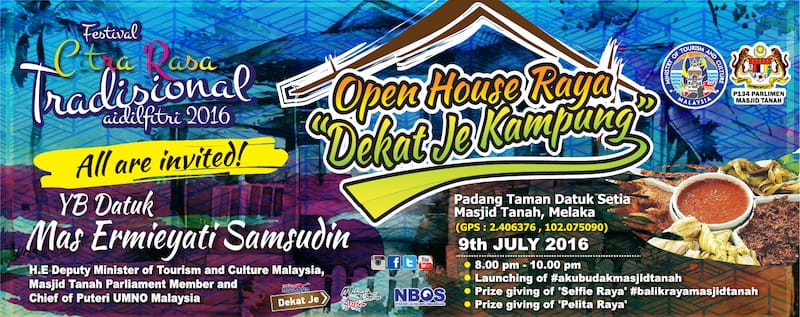LIVE THE IBAN WAY
Be prepared to receive a warm traditional welcome, Iban style, where
the entire longhouse community greets you at the riverbank, when you pay
them a visit in Lemanak.
The Ibans' enthusiasm and elation at receiving guests is infectious as
you too end up feeling happy and at ease in their presence.
Maybe they dress differently from you and maybe their home is
different from yours but their honesty and sincerity at welcoming you to their
home breaks down all barriers.
Upon arrival at the longhouse, children and adults race forward to
meet the boat and greet you. With warm smiles, they would usher you into
the guest longhouse, which is made of wood and asbestos to freshen up
before meeting the host.
Later you will find yourself seated in a semicircle around the medicine
man or shaman where he will tell tales of his tribal achievements. He will
most likely show off heads, which he had hunted, in the "old days" when
headhunting was still a norm for them.
For the Iban decades ago, headhunting was a way to show their
courage and bravery and of course, maidens would only look at men who
were brave enough to come back with a head. This was an added incentive
for headhunting!
In the evening, you may choose to go for a lovely jungle walk and sit
around and wait for dinner in the longhouse. Dinner for the Ibans are simple,
they usually eat whatever they find in the forest and rivers. So one can
expect fresh fish, vegetables and fruits.
Many of the tribes in Sarawak only eat livestock for special occasions
such as during their thanksgiving festivals or weddings. So, do not expect to
see any meat on the dining table.
After dinner, the Iban will entertain their guests with the ngajat (warlike
traditional dance). They will be dressed in their traditional best, complete
with a weaved wrap, coloured beads and headgear made with feathers.
The Iban, previously known as the Sea Dayaks, are found throughout
Sarawak, especially in the lowlands. They live mostly in longhouses along
main rivers and their tributaries. It is not really known where they originated
from, some say Sumatra, but the Iban themselves claim they come from
Kumpang in Kalimantan including the northern tributaries of the Kapuas Lakes
in Indonesia's Kalimantan.
One of the most notable features of Iban society and culture is the way in
which religion is part of every life event, and rituals are performed for all
activities.
Ibans live in the longhouse made up of independently owned family apartments,
which are joined longitudinally to each other so as to produce a single
structure. The longhouses vary in size, as there are houses of three or four
family apartments and scarcely over 10 metres in length, to houses that
sprawl for more than 100 metres along the river bank to accommodate
more than 40 families.
The roof of the longhouse is made up of attap; the doors are made
from tree bark while the flooring is made from nibong (all resources are
from the coconut tree). They use the resources of the forest to build their
homes, even for their food. Their staple diet is rice and of course, they
cannot do without their tuak or rice wine.
The principal divisions of a family apartment include the bilek or living
room, the sadau or loft, the ruai or roofed gallery and the tanju or open
platform. The ruai is the most happening area in the longhouse as it is the
centre of community and social interaction. Here is where meetings,
disputes and even guests are brought. This is where the residents of the
longhouse sit to chat or merely to gossip.
Some people may even be surprised at the hospitality of the Ibans, as
they welcome guests to their longhouses with smiles and they genuinely
enjoy the company of their guests. In fact, warm hospitality is one of the
main traits of the Iban people.
TOURS TO LONGHOUSE
Many travel and tour operators organize trips to an Iban longhouse as
there are some 5,000 of them all over Sarawak and they can be visited all
year round. Some of the long houses can be visited in a day trip but of
course an overnight stay is best. This would give you ample chances to
learn more about the Iban way of life, customs and culture.
Longhouse trips are commonly arranged along any one of the four
rivers: Skrang, Lemanak, Ulu Ai and Engkari. All these rivers flow into the
larger Batang Lupar (batang here means river).
Once there, you have the choice to either stay in the guesthouse
which is a replica of a longhouse meaning you have to stay overnight
dormitory style or you can stay with the Iban themselves on the ruai.
During your stay, you will be able to watch a blowpipe competition and
enjoy a jungle walk, listen to some Iban folklore, pastimes and watch the
ngajat being performed. There are other activities depending on the length
of your stay.
The best part about the visit to the longhouse is the river ride, as you
will go along a cruise with overhanging trees lining the riverbank.
For information about the longhouse visit, you can contact the
Sarawak Tourism Board at www.sarawak.gov.my/stb.
ISSUED BY: Communications Division, Tourism Malaysia
DATE: May 16, 2003
For more info please call Hayati Hayatudin at tel: 0326935188
Or email hayati@tourism.gov.my

 View Previous
View Previous

